Modern technologies allowed to create a new type of roofing material - composite tile. This coating in which is combined, on the one hand, the strength and reliability of steel roofing material, on the other - the beauty and soundproofing qualities of the natural tile.
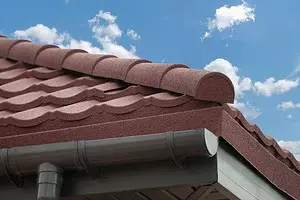
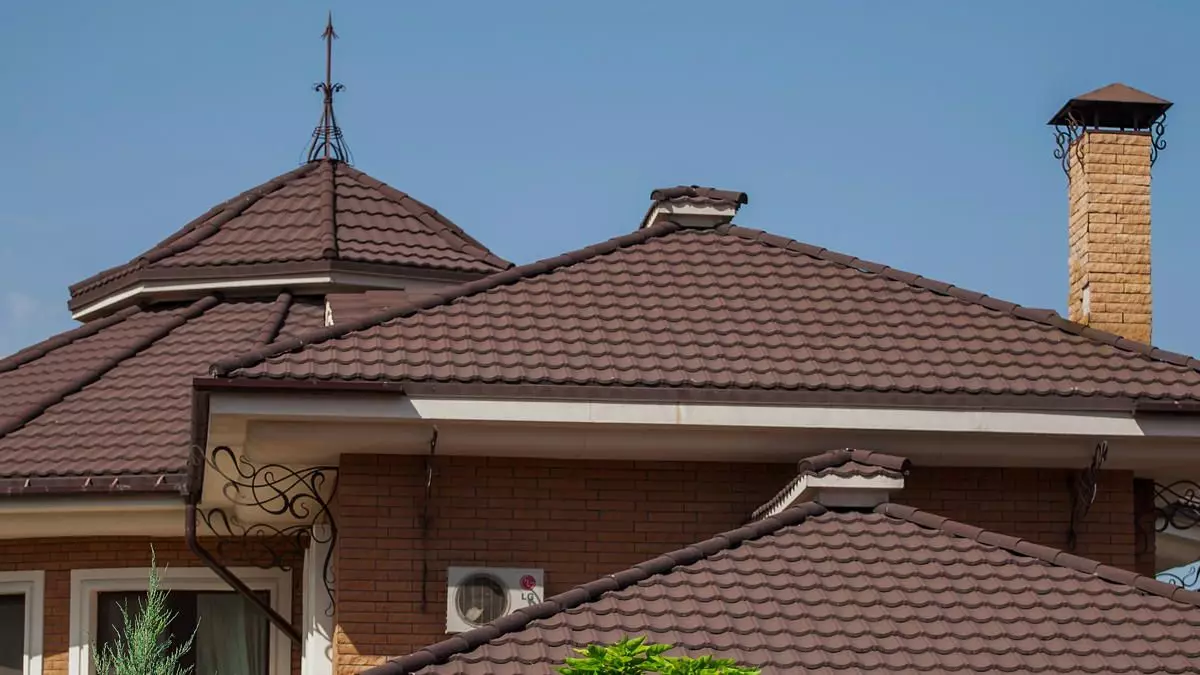
Photo: Tehtonol
Despite the fact that the composite tile appeared on the market quite recently, she has already managed to prove well thanks to excellent characteristics, the ability to "serve" in the most extreme conditions, and, of course, excellent decorative properties. In addition, the material is in the middle price segment, which allows the roofs of both larger houses and small cottages. Today the market provides products such as Technonol, Metrotile, Gerrard, Icopal, Queentile. The production process in all is similar, but there are also their differences.
Tile structure
The composite roofing coating is multilayer, it is based on a high-quality steel sheet with a thickness of 0.45 mm, providing deformation stability. On both sides, an anti-corrosion aluminum alloy is applied to the sheet, the use of which increases the service life of the metal sheet 4-6 times compared with the usual galvania. Each component included in the aluminum coating performs its function: aluminum is responsible for anti-corrosion protection sheet, zinc protects the edged edge and scratch surface. As numerous tests showed, aluminum coating provides an excellent degree of surface heat transfer (up to 75%) and increases the operating service life of the composite roof. Thus, Tekhnonikol provides a guarantee for its collections TechnoNIKOL LUXARD 50 years, with the operational service life of more than 60 years.
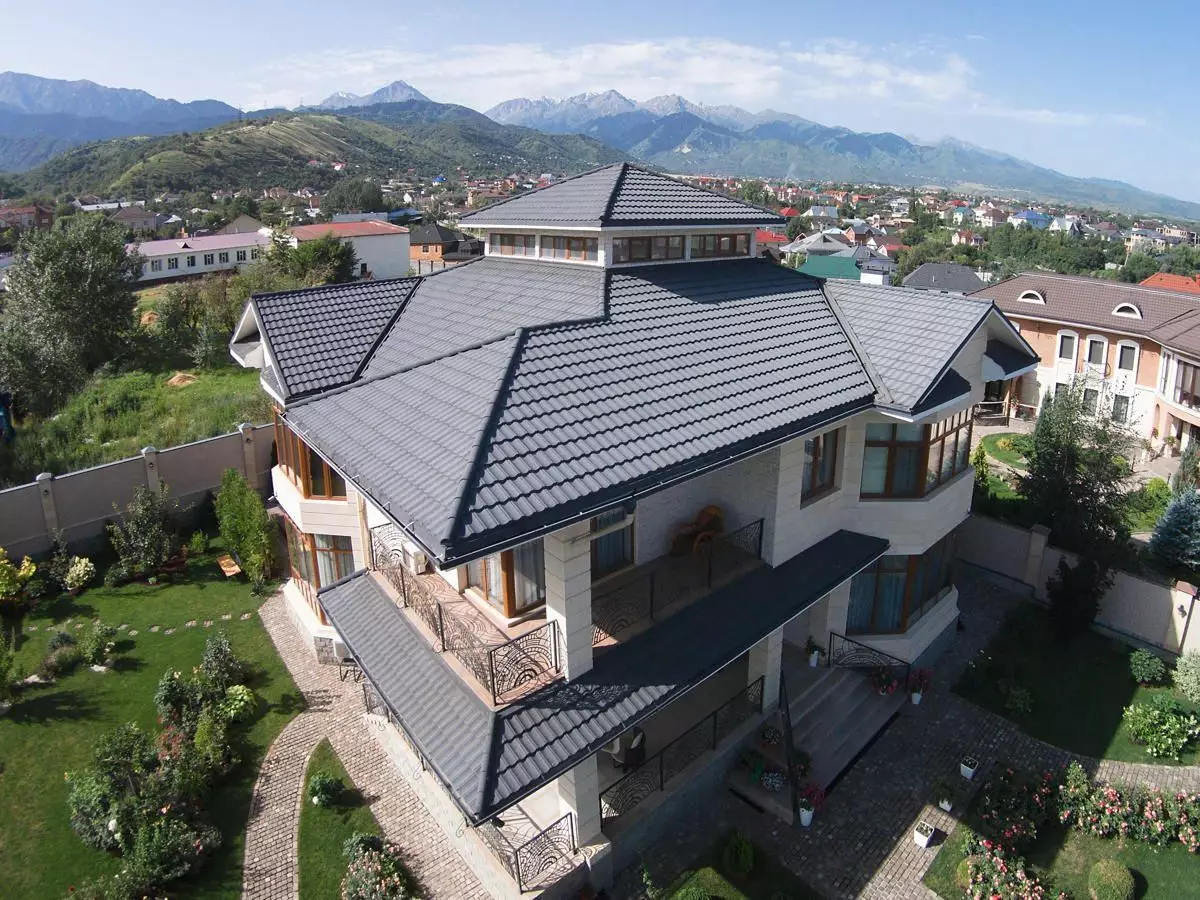
Photo: Tehtonol
The facial side of the composite tile is protected by granules from natural stone, thanks to which the effect of natural ceramic roof is created. The granulate on the approval of the manufacturers is highly resistant to ultraviolet, so the material retains the brightness of the color during the entire service life, and the special acrylic varnish does not give it to crumble and be covered with moss.
Specifications
Composite tile perfectly tolerates heat and frost, it is not afraid of sudden temperature differences and, unlike ceramic roof, can withstand any number of alternate freezing and thawing cycles. The material is resistant to UV radiation, not noise during rain and hail, moreover, it has a small weight (about 7 kg / m2), and therefore it can be mounted on a lightweight rafting structure.
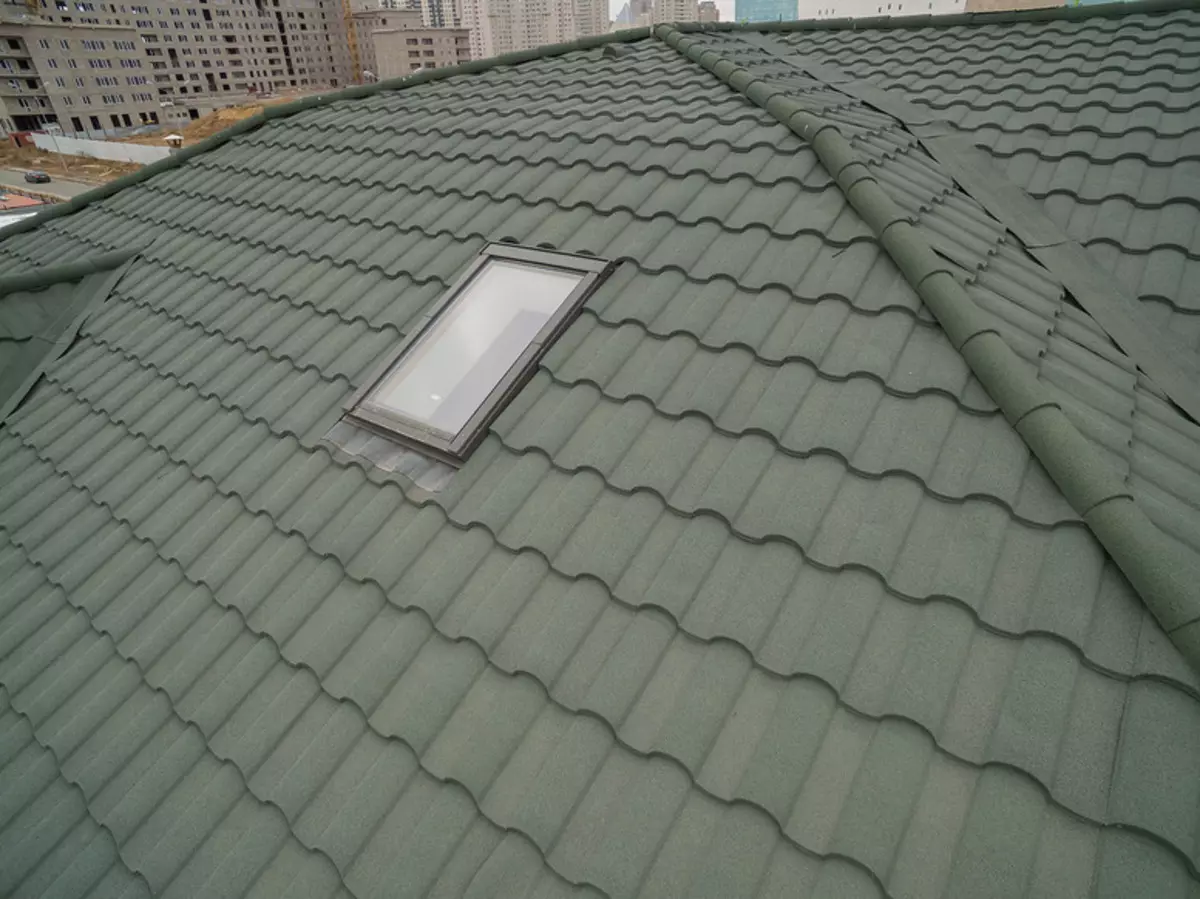
Photo: Tehtonol
Some manufacturers (for example, Tekhnonikol) allow the installation of composite tiles in winter, at temperatures up to -20 ° C, but it is necessary to comply with certain rules.
Composite tile sheets have small dimensions (1330 x 430 mm), which is significantly simplified by the installation of tiles, especially for the roofs of a complex configuration. In addition, due to the small size of the sheet, the amount of waste is reduced.
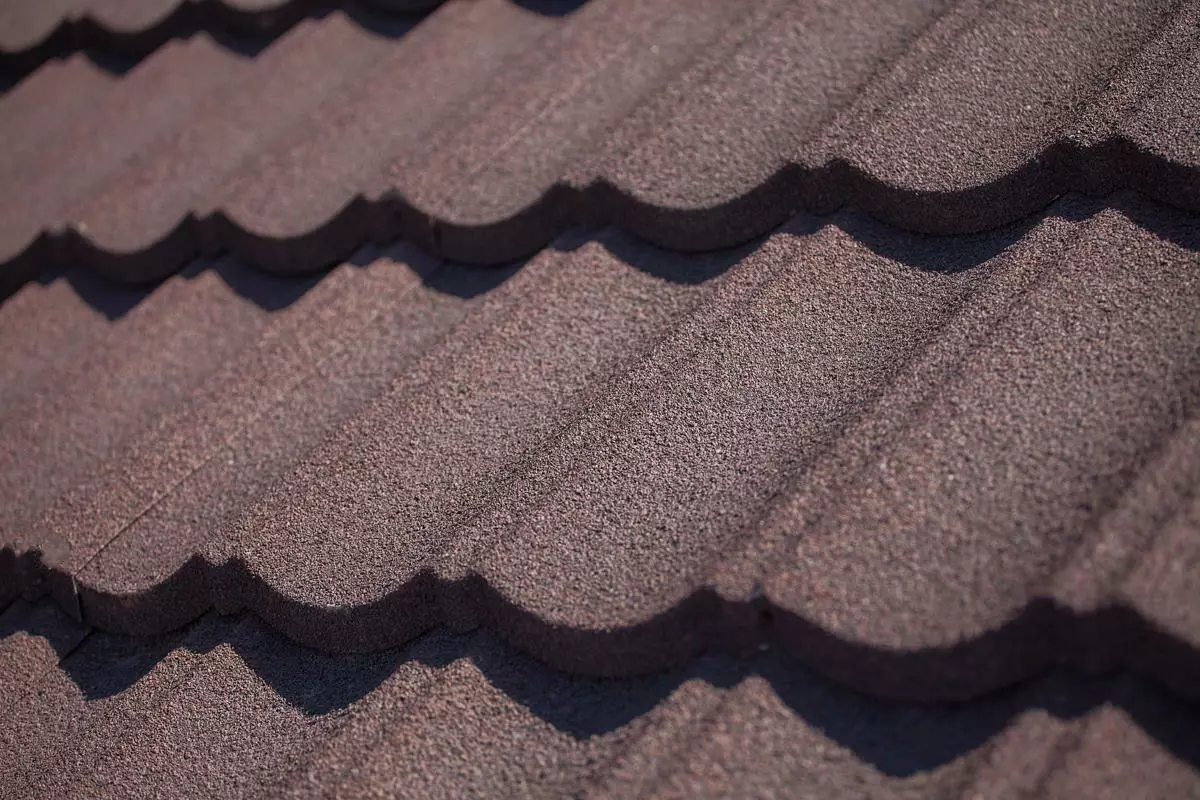
Photo: Tehtonol
Sheet profiles are quite diverse - their over ten, but the most popular form imitating natural ceramic tiles. For example, in the assortment of Technonikol, 2 collections - TechnoNIKOL LUXARD CLASSIC, which is characterized by the classical form of metal tile, and Technonol Luxard Roman, repeating the shape and reliably transmitting aesthetics of ceramic tiles. As for the color gamma Tekhtonikol Luxard, you can choose from 9 different colors and shades, including "Mokco", "Onyx", "Malachit", "Granat", "Bordeaux", etc., or order any other from the Shinglas collection, Which allows you to choose the optimal option for any roof.
Compare with others
Thanks to its excellent properties, the composite tile competes successfully, and even exceeds the materials of the premium class. Take, for example, slate. Of all the premium roofing materials, he is the most durable, but also the most expensive. Durable, enough elastic, with high heat and sound insulation characteristics, the slate is well drilled and cutting. There are no pores and capillaries in the structure of the stone, so it does not miss and does not absorb water. But still, with all its advantages, the slate is quite expensive (from 70 rubles / tiles), besides, a reinforced solinge system is required for the device of such a roof.
Another material is a ceramic tile - known since the time of Ancient Egypt, while its service life without changing the initial type and properties is more than 100 years. Durability, strength, heat resistance and frosts are achieved due to the special production technology. On the clay billet, "baked" in the furnace at a temperature of 1000 ºС, special coatings are applied - Angob (a mixture of minerals, clay and water) or a glaze. They not only allow to paint the tile in different colors, but also increase the performance characteristics of the material. Ceramic roof quiet, has a low thermal conductivity, over time it does not be covered with moss and does not fade, and if necessary, you can quickly replace the element without dismantling the entire roof. But even here there are their own. Compared, for example, with composite tile, ceramics are still expensive material (from 1000 rubles / m2), moreover, it is more fragile, easily scratched, and therefore requires careful handling during transportation and installation. The considerable weight of the coating (40-60 kg / m2) requires a thoroughly thought out and enhanced rafting system, and this further appreciates the cost of the already unexpected design.
Finally, cement-sand tile. Cement, sand, dyes and various kinds of additives are mixed in its composition, add water and pressed in special tanks. After that, the material is cut, ground and dried at a temperature of 60 ºС. The final stage is staining, which gives "concrete" billets additional strength characteristics and a presentable appearance. Due to its composition, the cement-sand roof is resistant to any atmospheric precipitation and temperature drops, not lit, it does not make noise during rain, in terms of durability, it may well compete with a ceramic analogue. However, despite the more adequate price (from 400 rubles / m2), the weight of the coating requires complex technical calculations of the main roofing nodes and the enhanced rafter design.
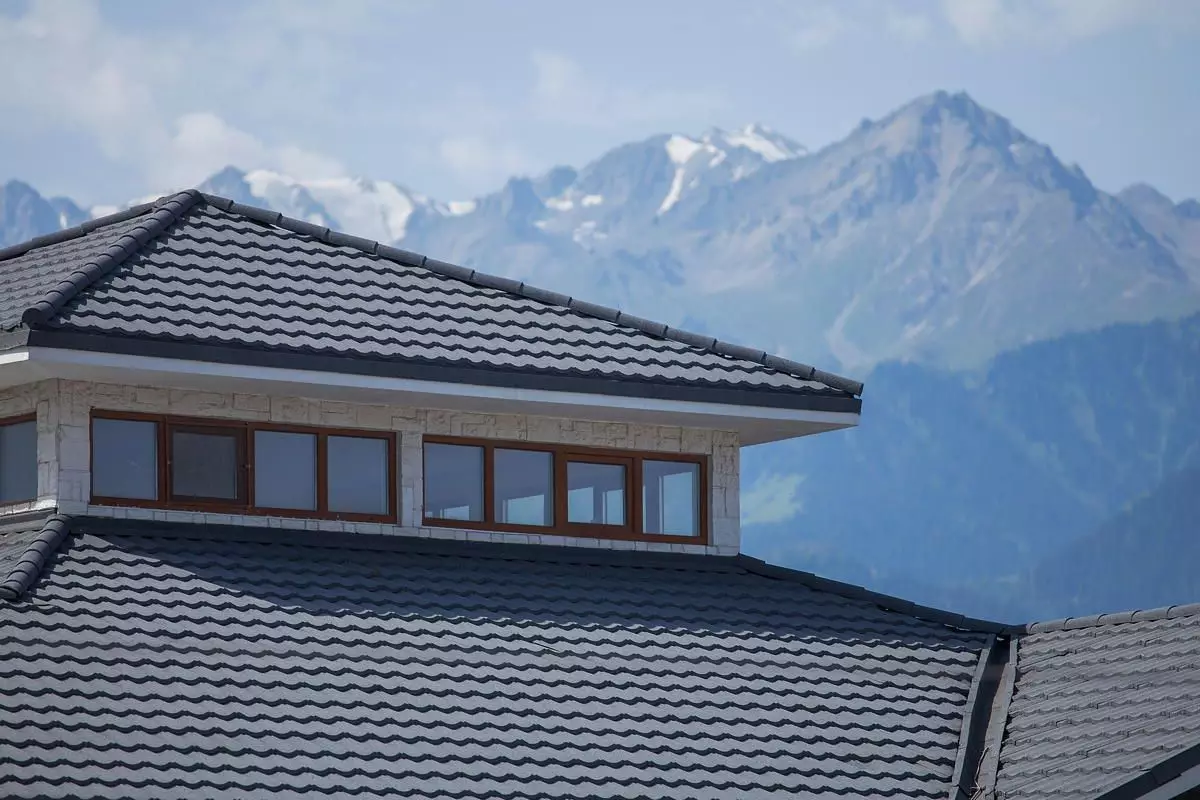
Photo: Tehtonol
Objectively evaluating the materials, it can be argued that the composite tile is inferior in the characteristics of neither the shale, nor ceramic nor cement-sand tile, and therefore is the optimal option in the premium segment of roofing materials. Now without high costs and efforts when installing, you can get the roof of the highest quality, which will serve faithfully for more than 60 years.
